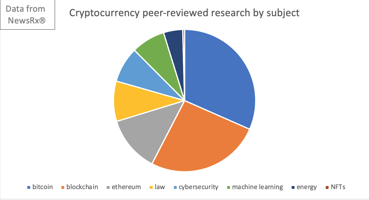←Back to resources Last year, the scientific focus of the world was, once again, squarely on the...
2021 Research Trends in COVID-19
←Back to resources
It’s year two, and the pandemic is going as strong as ever. With delta variant-fueled surges of infections in highly-vaccinated countries over the summer, and now with the emergence of the infectious omicron variant, it’s clear that the struggle against COVID-19 is far from over.

Last year, we shared four graphs about COVID-19 research in 2020, covering the most important trends in scientific peer-reviewed research. With another year of impactful discoveries behind us, it’s time to review four more graphs about coronavirus research trends in 2021.
Vaccine research still on the rise
It took a groundbreaking effort to produce coronavirus vaccines in record time. These breathtaking timelines, as well as the myriad political and social issues that have unfolded in real time along with the vaccine rollout, have created an ongoing need for COVID-19 vaccine research.
Let’s take a look at the number of peer-reviewed research articles about the COVID-19 vaccines this year. The number rose slowly and steadily until May, spiked in June, and has continued to climb ever since despite some slight growth stagnation over the summer. Clearly, there is a strong need to continue to study the vaccine, vaccine hesitancy, vaccine inequality, and scientists are responding.
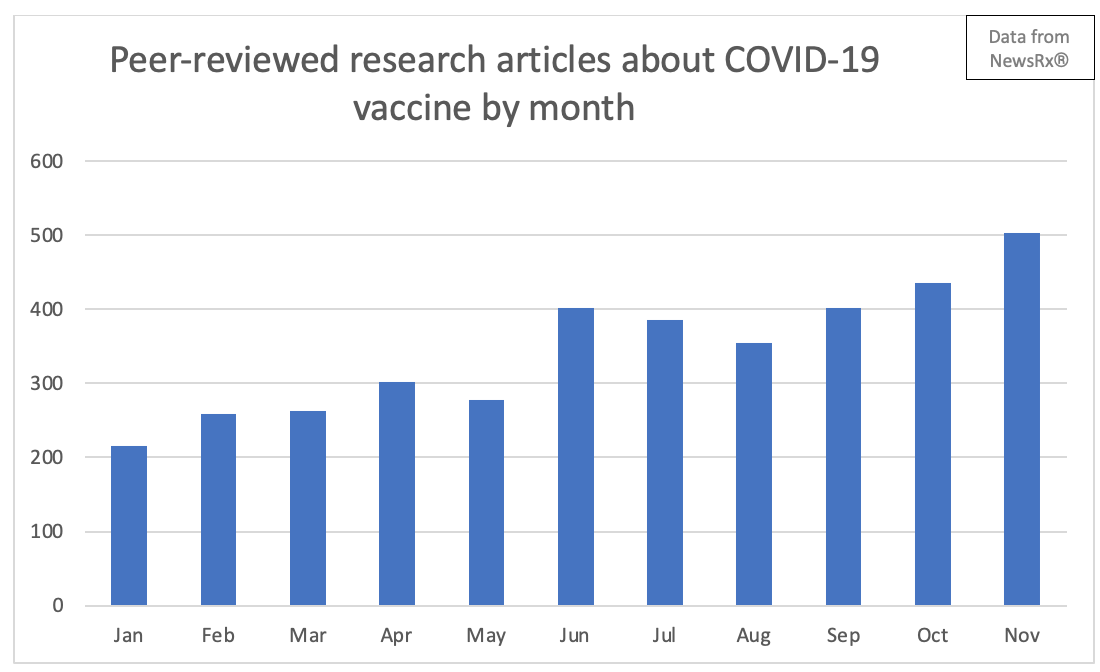
Intersection of COVID-19 and biotech surging
With well over 50,000 peer-reviewed research articles about coronavirus and counting, this year has seen an incredible volume of research and scientific focus on the pandemic.
We took a look at trending sub-topics and keywords within COVID-19 research, revealing the significant presence of coronavirus research in biotech and artificial intelligence. These articles covered everything from COVID-19’s impact on the biotech industry, to bioinformatics in coronavirus treatment, to nanomedicine’s role in COVID-19 diagnosis. Topics like telemedicine and sustainability also generated substantial interest.
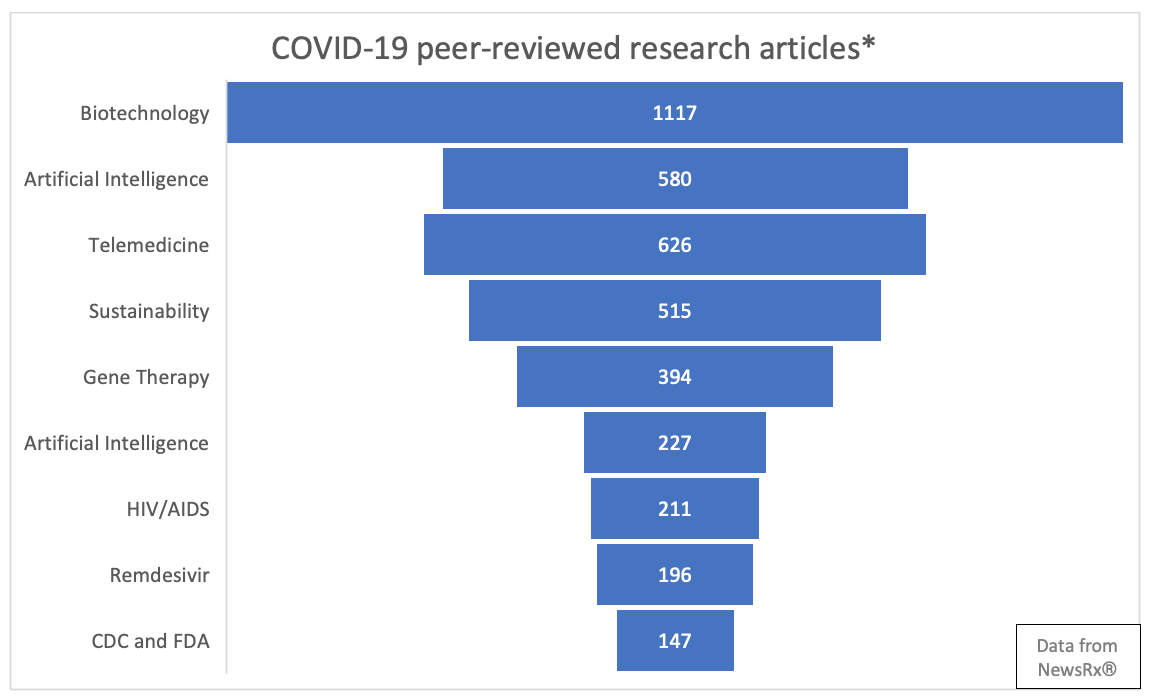
*The number in the bar represents the number of articles published on COVID-19 and each sub-topic.
COVID-19 preprints peaked in March
Coronavirus and the urgent need for fast research about this new disease accelerated the rise of preprints. Even before the pandemic, many had come to see preprints as an important part of the scientific publishing process that can make up for the slower, time-consuming process required by traditional publishing. Still, preprints are far from perfect, and don’t replace the rigor of a comprehensive peer review.
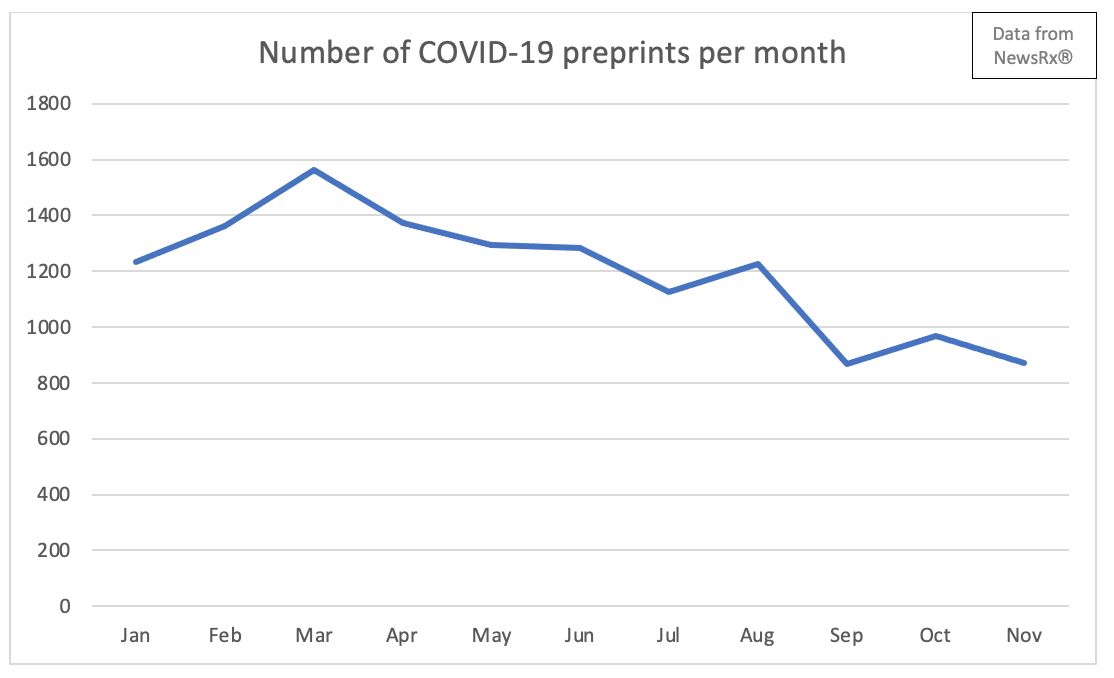
These trends can be seen at play with the volume of preprints per month about coronavirus.
The number of COVID-19 preprints peaked in March of this year before experiencing a gradual but steady decline for the rest of the year. This is significant because the trend diverges slightly from the volume of peer-reviewed research on COVID-19 overall. The number of peer-reviewed research articles on COVID-19 remained at all-time highs from February to October before dipping slightly towards the end of the year.
Coronavirus dominated disease research… again
Last year, we saw that there were nearly eight times as many studies on COVID-19 as there were on influenza and nearly three times as many as there were on HIV/AIDS. The trend of COVID-19 research dominating infectious disease research categories continued strong into this year as well—in fact, that level of dominance rose by nearly 3 times across the board.
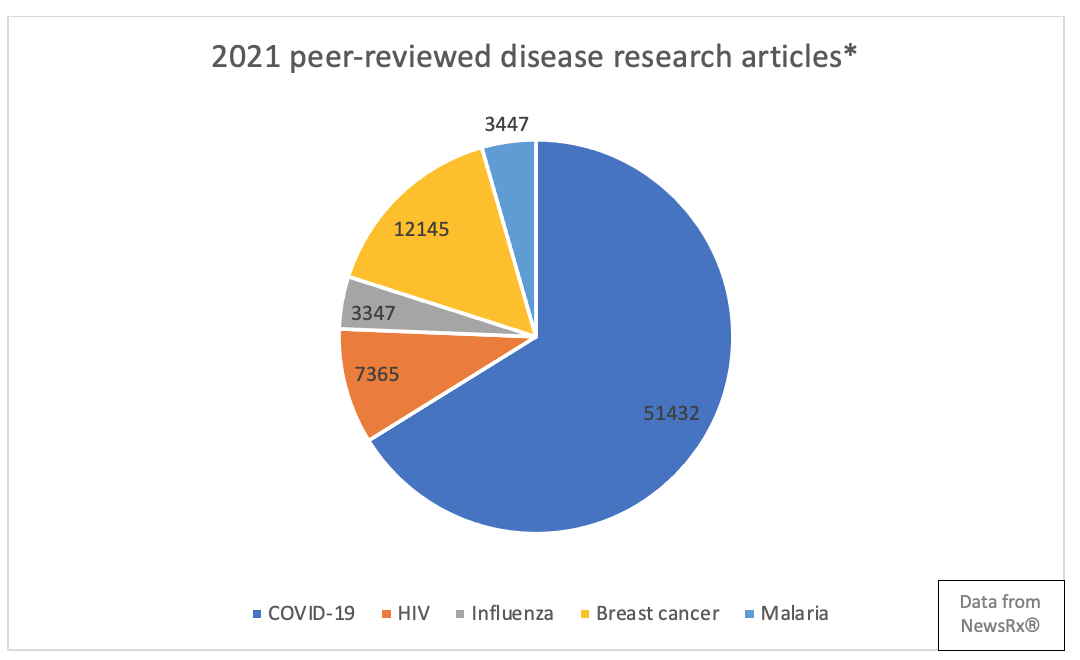
*The number of peer-reviewed articles about each disease is represented by the slices of the pie chart.
This year, COVID-19 research articles outnumbered articles on breast cancer by 4 to 1, HIV by 7 to 1, and influenza by 15 to 1. Last year, those ratios were 2 to 1 for breast cancer, 3 to 1 for HIV, and 6 to 1 for influenza.
As the pandemic has continued, scientific focus has shifted more towards studying the coronavirus pandemic, even compared to the level of attention at the beginning stages. With new variants cropping up and seemingly no end in sight, will research attention and output rise even more? Or will scientific interest shift to new topics in 2022? Only another year in monitoring research will tell.

.jpg?width=50&name=DSC_0028%20(1).jpg)
